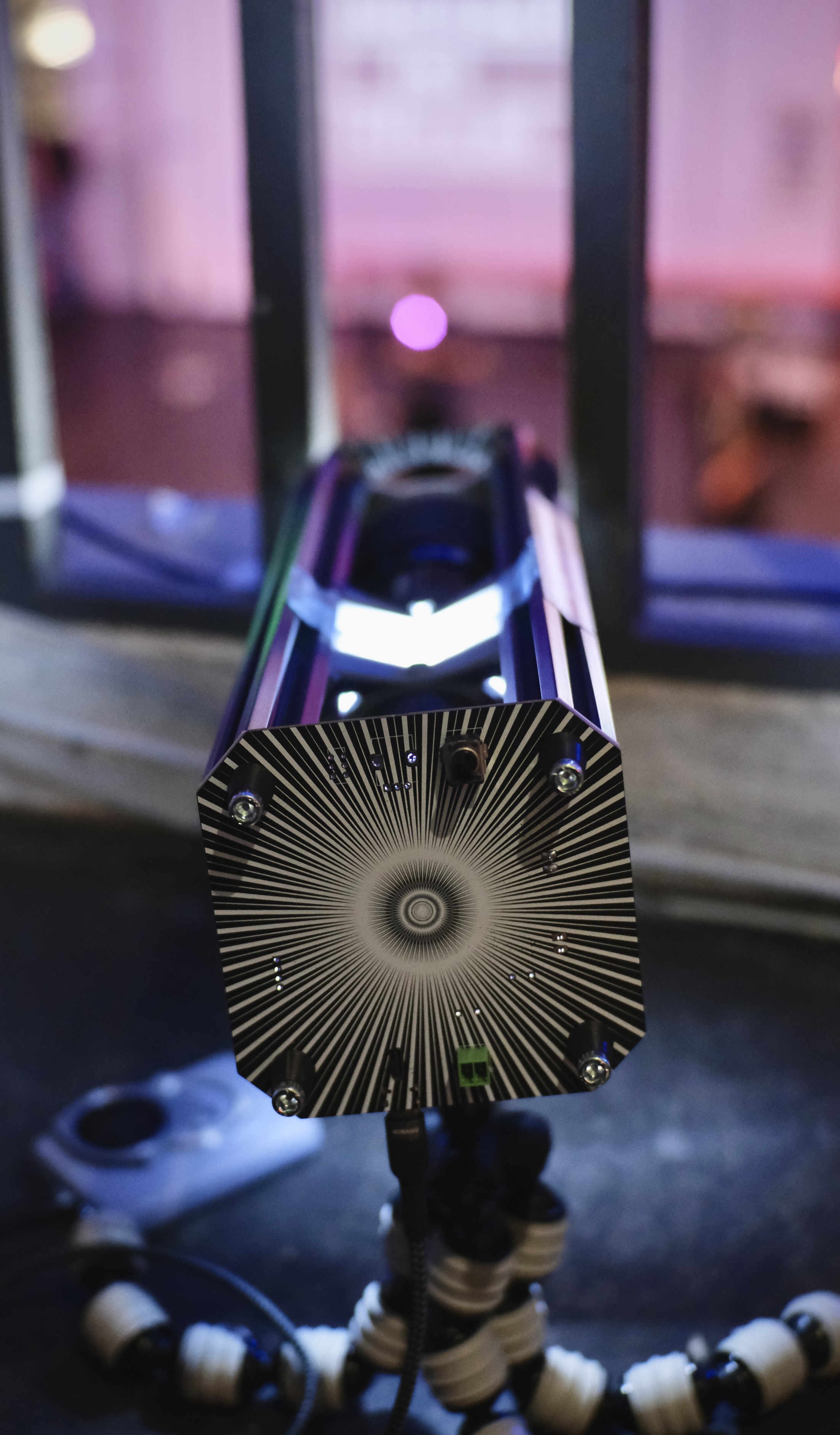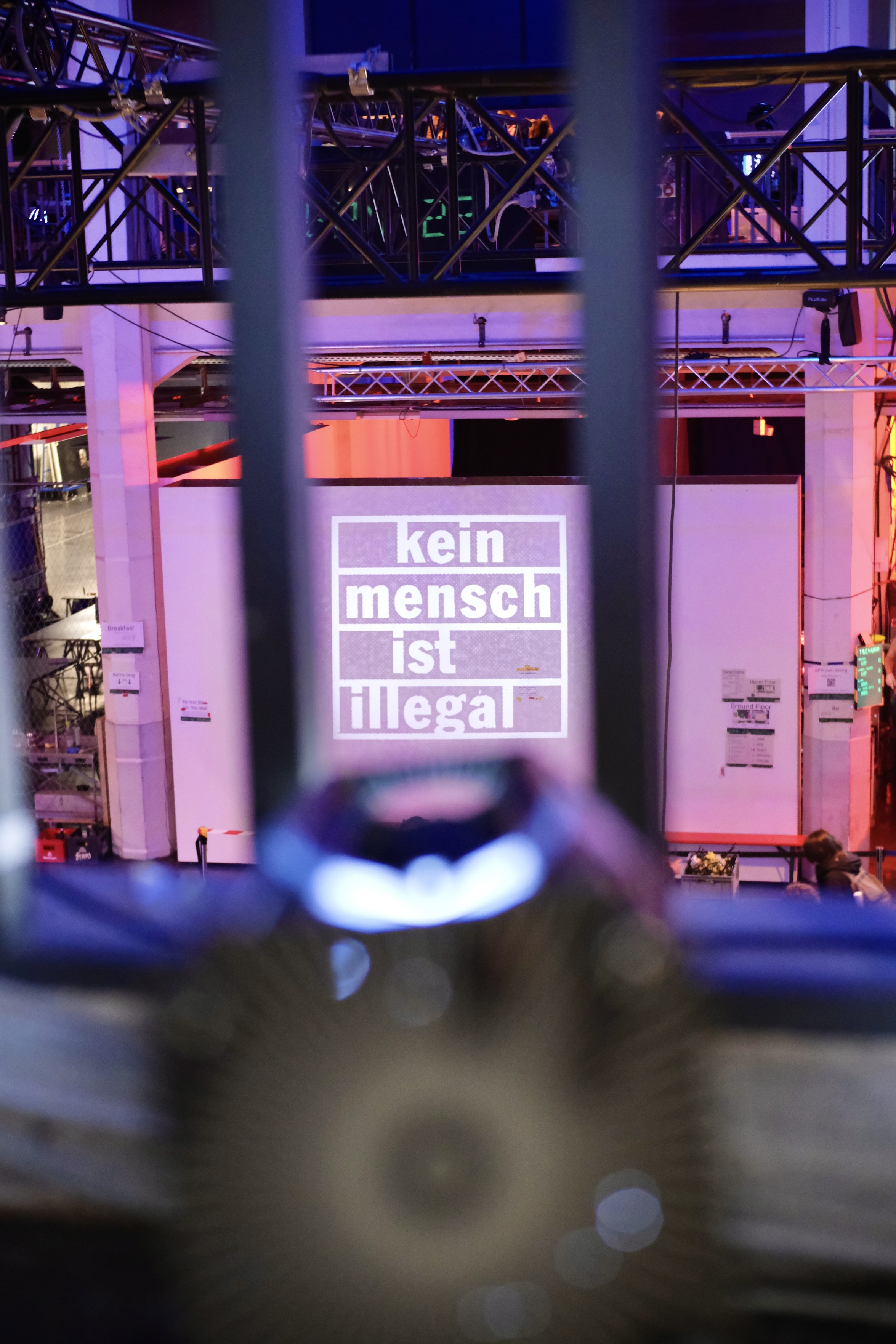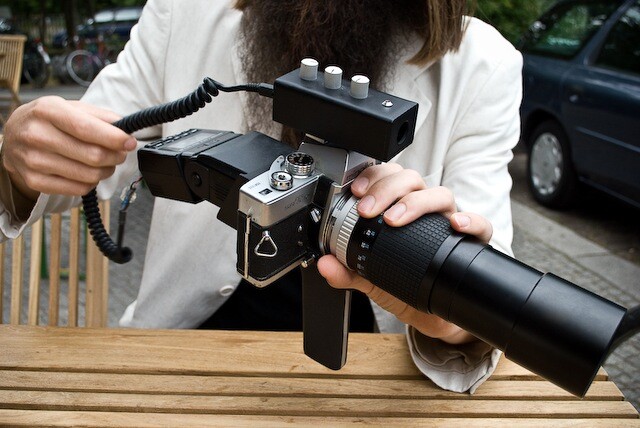I think I have teased this already, so here it is:
Proudly presenting “ligra”, an open source projector/projection (LiGra – Light Graffiti) platform, allowing you to broadcast your messages, your logos, your artwork, whatever you need others to hear, to whoever sees it! :3
With ligra I wanted to explore image-projection and especially projections on the cheap, so I went to my local flea market and built a platform around old camera lenses. You can find two of them in the wild at #GPN22
It’s fairly easy to build and straight forward in its functional principle. ligra is simply a camera working backwards.
Right behind its (canon FD) lens it hosts a 2D printed piece of foil that has ruffly the size of a 35mm sensor. On it the image to be projected.
The whole apparatus is illuminated by a simple, single LED light source and I already have used just a flashlight there.
All of these components are mounted in a ridged aluminium extrusion frame with 3D printed brackets. Another flat bracket at the bottom adds a 1/4” tripod mount, adding versatile mounting options, ranging from tripods to strap mounting the whole frame somewhere :3
All files and especially assembly instructions, as well as general ideas and instructions about building such systems can be found at https://github.com/Jana-Marie/ligra (please note that the instructions are still WIP, I will add them ASAP!)
Trammell Hudson
th@v.st@janamarie reminds me a bit of the "Image Fulgurator", an art project that modified a 35mm camera to hold a slide and a flash behind it. The flash triggers when it senses someone else taking a flash photograph and projects the slide through the camera lens onto the other person's scene.
Ooh, I suppose I should also add some less artsy and more explanatory shots. Here you can see the light source (left), stencil mount (mid) and lens (right), as well as the tripod mount(s) and the stencil carrier system that I designed for this. They snap in place via the three magnets! :3
s0 Traingirl Era
s0@cathode.church@janamarie neat! Don’t know if you’re aware, this is called a “gobo projector” in technical lighting parlance — the image slide is called a gobo.
There are existing standard gobo sizes, and it’s relatively inexpensive to have them manufactured (fibre lasers get cheaper all the time) with specific patterns/text, rated for high temperatures as normally used in theatrical lighting fixtures.
You may be interested to look at the construction & optics of theatrical moving lights if you are looking for inspiration on increasing the power and thermal efficiency of the design, as they’ve been being optimised for this job for nearly 30 years now. Brands such as Ayrton, Martin, Robe, Clay Paky, Robert Juliat, Chauvet, etc.
In terms of cheap replication of optics, theatres are pretty much everywhere discarding their old incandescent profile lamps in favour of new LED fixtures. Even places that aren’t actively replacing, will be discarding old damaged/scavenged units as several popular models have had parts discontinued. If you can find some, you’ll have a free optic platform, with Gobo holding slot built in, that just needs a replacement light source.
@gsuberland is running the lasers at EMFCamp and would probably have some more thoughts if you haven’t chatted already.
@s0 @gsuberland Hey, thanks! :3 yea, I'm aware that this is often referred to as "Gobo projector", not sure if mine falls under this category though? I rather see it as a platform to project _whatever_ onto any surface. It is not limited to mere stencils, but can also host LCDs, colored foils, anything that may change the light in its path. Maybe it is a gobo, not sure though :3
@s0 @gsuberland oh, and for the second part: No, I don't want to recycle a stack of old gobos, neither do I want to have a bunch of dia-projectors floating around. I specifically wanted to design my own versatile and adaptive projection-platform, based on recycled camera lenses
Graham Sutherland / Polynomial
gsuberland@chaos.social@janamarie @s0 I just noticed how sharp the projected images came out. I can't see any fringe effects. Is that mostly down to the lens? Usually with CoB LEDs I expect to see blocky edges from the multiple emitters, or blurry edges due to the large emission surface of the pumped phosphor coating on PC LEDs.
@gsuberland @s0 a mixture of sharp stencils/masks, the good lens, bringing it into focus (using the lenses focus) aaand a point-light-source (a single 10W LED + optics to bring it into one beam, beyond 10W it will get a bit more tricky as die-sizes increase)







